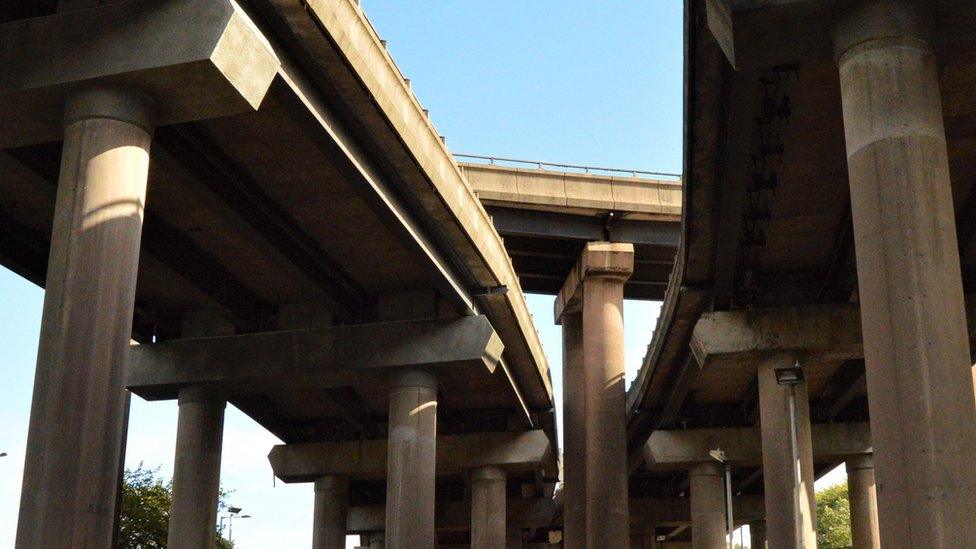Birmingham's Ringway Centre: Monument to the car no longer needed?
- Published
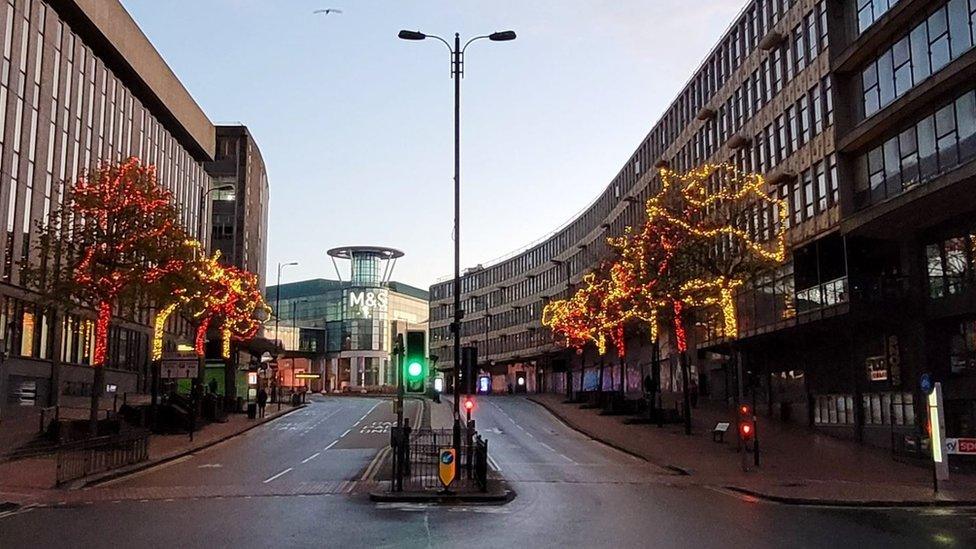
The Ringway Centre on the right hand side of the image. Should it stay or should it go?
Campaigners are fighting to keep Birmingham's Ringway Centre, described as the city's "best piece of mid-C20 urban design". Others say the 1960s office block "needs to go". BBC News hears the arguments for and against.
The trees which line the route of one of Birmingham's busiest roads were given some extra sparkle this Christmas.
It was the Southside District's, external way of saying goodbye to the Ringway Centre, a 1960s, six-storey, sweeping, curved office block that lines Smallbrook Queensway, the road which leads to New Street Station.
The decision to demolish it was taken by the city council's planning department in September, with a narrow vote of seven to six in favour. It means some businesses, such as the city's well-known Indie nightclub Snobs, moving out. In Snobs case, it will be its third move in 10 years.
Campaigners, who fear Birmingham is losing its best modernist buildings, want the site to be repurposed rather than knocked down. They rallied, engaged a barrister, and have been successful in getting their submissions looked at by the city council, which will do so in the new year.
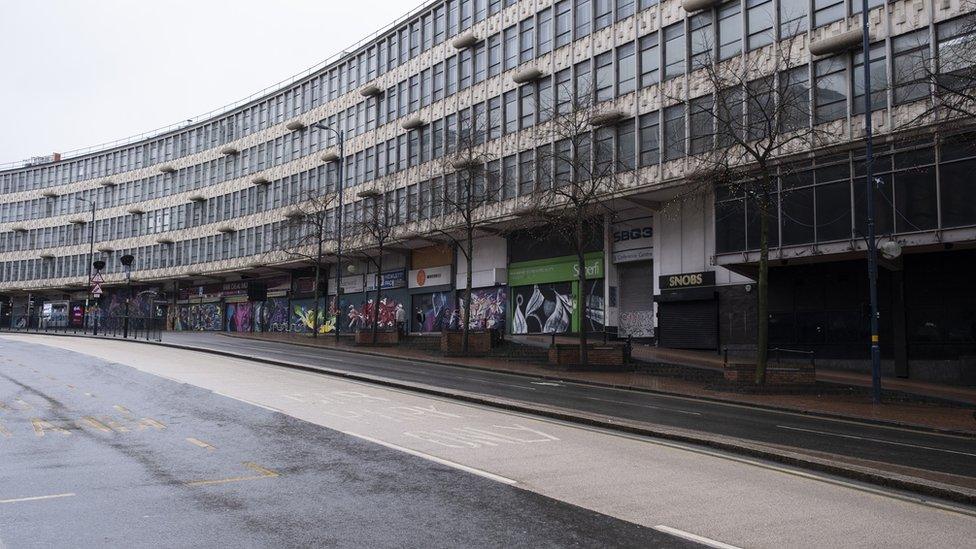
The building is known for its sweeping curve, as well as the unseal uplights, which are not now in use
The modernist office block was designed by James Roberts, best known for the city's Rotunda building.
It was built at a time when Birmingham underwent something of an architectural redesign, as the city embraced the popularity of the car.
Construction focused on transport - the inner ring road with its tunnels contributed to the city's "concrete collar" when it was built during the 1960s and 1970s.
The M6's Spaghetti junction, one Birmingham's best known landmarks, was also opened around the same time.
"Birmingham was the city of the car in the 1960s. It was very prosperous, workers had a good life and a lot of opportunity," said Mary Keating, of the Brutiful Action Group, which was formed to save the Central Library.
The library was demolished in 2015 and was, depending on your point of view, either an "important example of brutalist architecture" or a "place where books are incinerated, not kept."
"We went on to try and raise awareness of other buildings in the city," she said. "But the really great ones have gone."

Clint Eastwood was photographed with the Ringway Centre in the background, as he was on a promotional tour for his then new movie A Fistful of Dollars
There's no doubt the building looks unloved. In its heyday, its architecture was so striking it was used as backdrop for a photoshoot of film star Clint Eastwood, who visited during his 1967 UK tour to promote A Fistful of Dollars.
The Pevsner Guide (a series of guide books to the architecture of Great Britain) calls the Ringway Centre "the best piece of mid-C20 urban design in the city".
Fellow campaigner and architect Michael Dring said the whole street was designed as a sort of spine to the city's ring road and also as Birmingham's answer to London's Regent Street.
"The length is really important. It starts at a big junction (Holloway Circus) and then sweeps right to New Street station," he said.
As well as the length, campaigners praise the building's features - the uplights which still remain, along with the intricate frieze that has fine detail along the whole side of it.
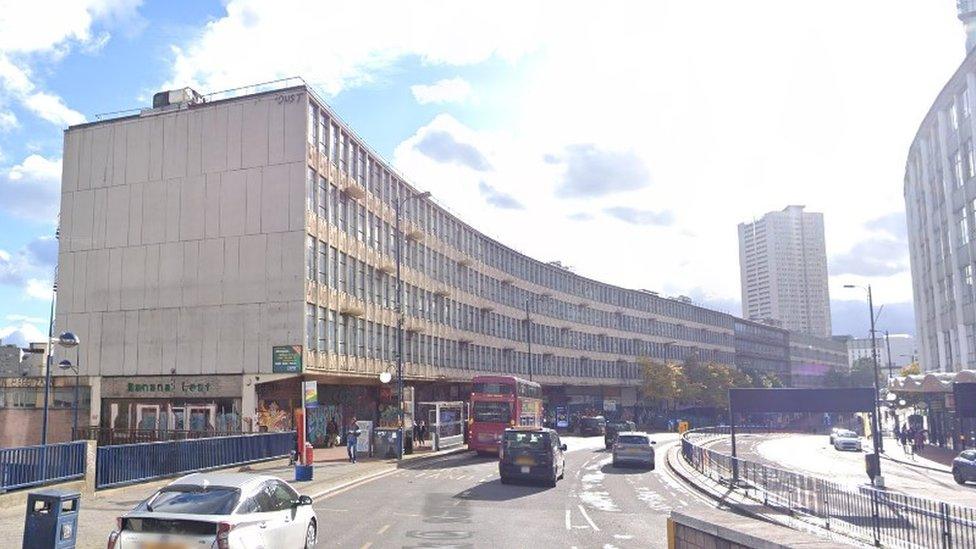
The office block on Smallbrook Queensway was built in the 1960s and now lies empty
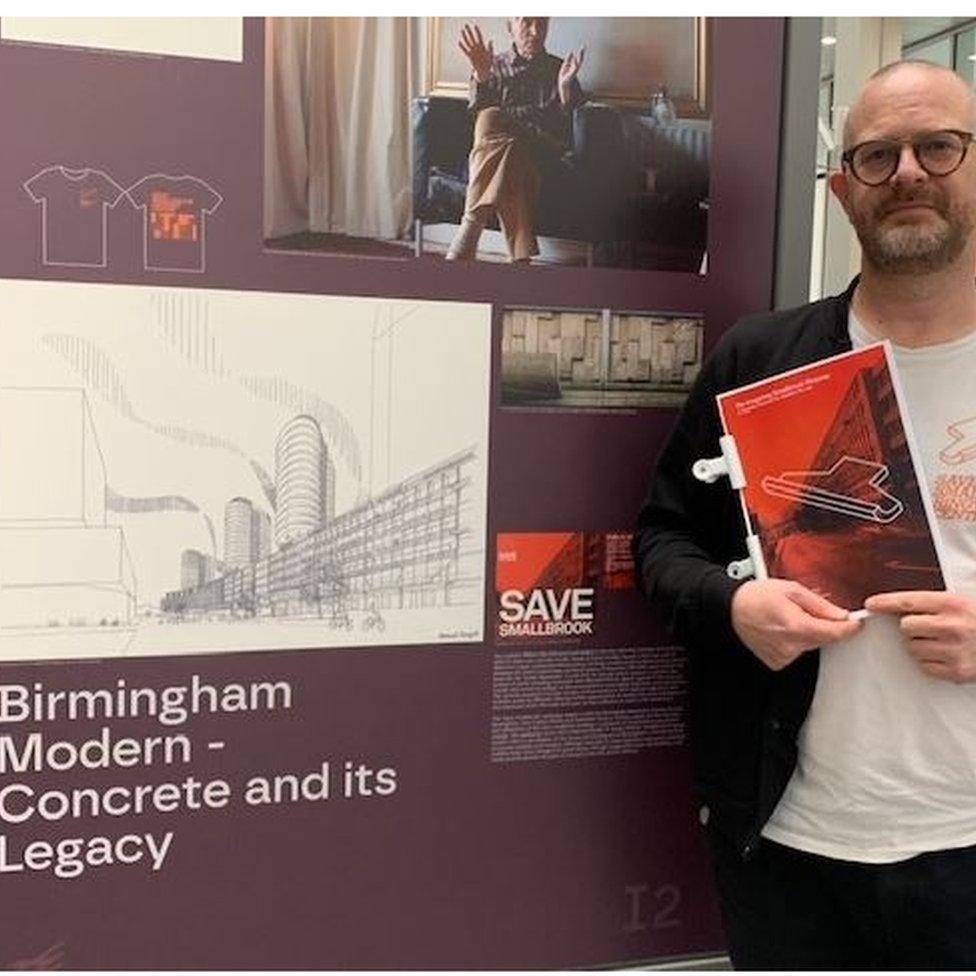
Concrete has a bad reputation, but it is heartbreaking to see the buildings go, architect and The Modernist contributor Michael Dring says
The campaigners argue the building could be repurposed and retrofitted. They point out the success of other buildings which have undergone the process - such as the "streets in the sky" at Park Hill in Sheffield, and Birmingham's Beneficial Building.
"You could do the same with the Ringway building. The structure is in good nick, the frontage is in good nick," Ms Keating said.
"The iconic feature is its lengthy sweep along with the relief and the uplighters. It's not difficult to put back."
The campaigners have put together a counter-proposal which would see the building retrofitted.
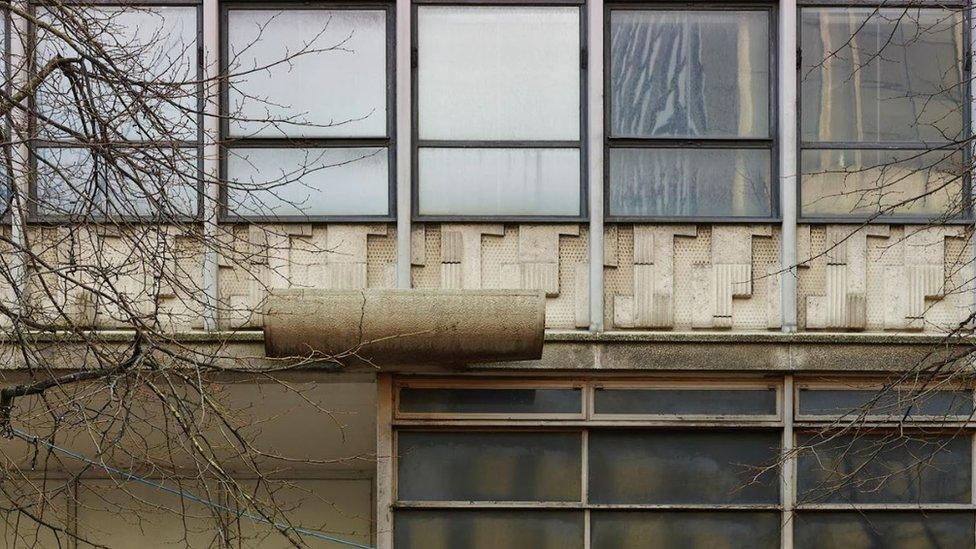
A close up of the building's intricate design and an uplighter. The design is repeated across the whole building
Instead of housing 1,750 apartments in three 54-storey tower blocks, as developers have proposed, they have suggested reducing the number to 450.
"1,750 apartments is density of Hong Kong proportions," Mr Dring said.
The apartments would be set back from the front of the building, with a winter gardens feel given to the front, and green space created on the road.
The junction with Hurst Street - the entrance into the city's theatreland, China Town and Gay Village - would be reanimated, Mr Dring said, and, importantly for those who describe the building as a "wall," there would be four new points of residential access to those parts of the city.
Another argument for retrofitting is that it is far more energy-efficient than demolition - and campaigners have highlighted this as the city council aims to reach carbon net zero by 2030, external.
Retrofitting the centre to make it into an energy-efficient building would be a fraction of the carbon emitted through demolition and starting again, sustainable architect John Christophers previously told the planning committee.
"Whereas by the developers' own admission, 187 million kg CO2 would be released through demolition and building of these tower blocks, which is the same carbon emissions as an average UK car driving the whole way around the world 33,000 times," he says.
Allow X content?
This article contains content provided by X. We ask for your permission before anything is loaded, as they may be using cookies and other technologies. You may want to read X’s cookie policy, external and privacy policy, external before accepting. To view this content choose ‘accept and continue’.
However, not everyone wants to see the building saved. Those in favour of re-development argue the city is no longer focused on the car and the demolition along with a redesign would make it easier for pedestrians to reach the city's entertainment areas.
"When I see the Ringway Centre I see a symbol of Birmingham, which was a car-dominated city. We no longer want this. In 2023, the city will be very different," Geoffrey Yap, joint chair of the Birmingham Chinese Festival committee, previously said at a planning meeting.
And while they took care to celebrate the building's heritage by decorating the trees the people at Southside were broadly in favour of the new development.

An artist's impression of what the redesigned site would look like
"We saw the plans that Brutiful put together and while we applaud the mission to retain the architecture we just feel that building has gone too far - it needs to go", business manager Julia Robinson said.
The opening up of Smallbrook Queensway will be a gamechanger for China Town and other areas, and it will be useful for an entry way for the Smithfield redevelopment, when it happens, she said. That area of the city is in need of more commercial space where there's currently a two-year wait, she added.
"It has been out of use for a decade," Ms Robinson continued.
"It is such a massive block to pedestrians coming from New Street, it is covered in graffiti, its been badly maintained and we really want to see it brought back to life and bring life back to city. However that happens is fine with us."

Follow BBC West Midlands on Facebook, external, X, external and Instagram, external. Send your story ideas to: newsonline.westmidlands@bbc.co.uk, external
Related topics
- Published28 September 2023

- Published9 December 2022
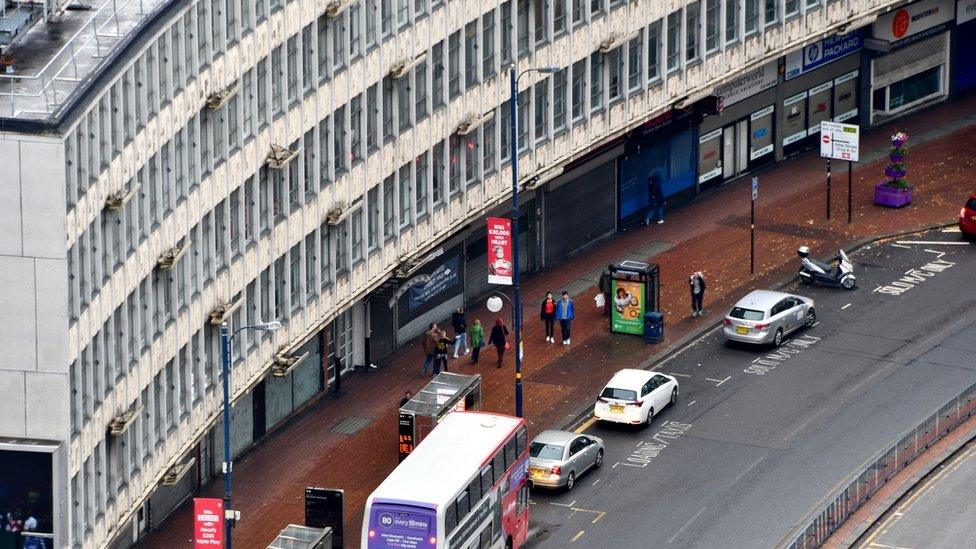
- Published20 September 2022
